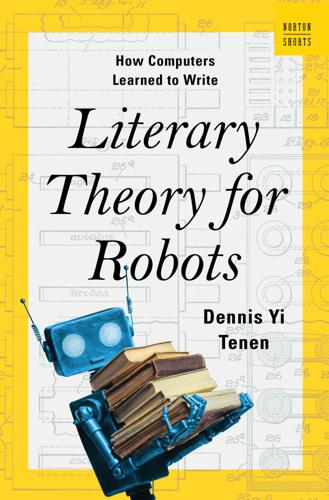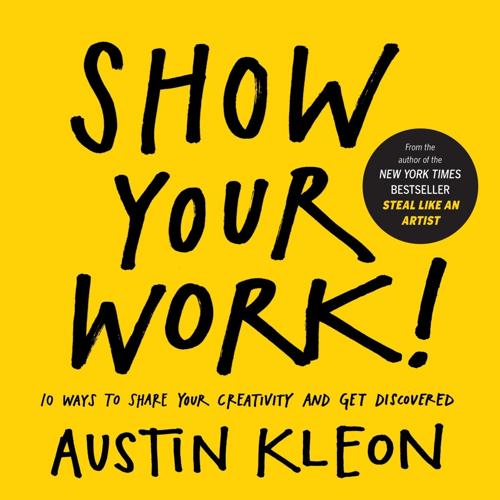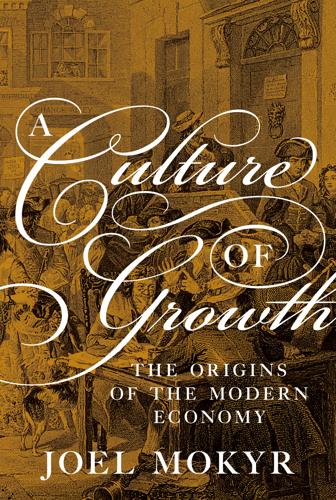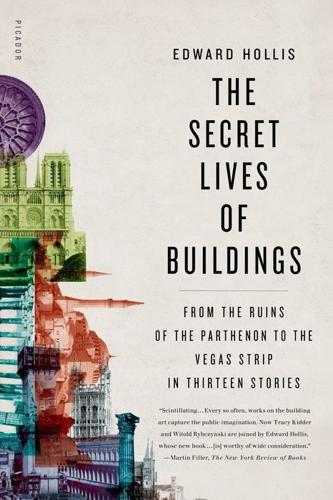
Wonderland: How Play Made the Modern World
by
Steven Johnson
Published 15 Nov 2016
.; 23,000 Medals; Inscriptions, one exceeding fair from Caerleon; A fetus cut out of a Woman’s belly, thought she had the dropsy; lived afterwards, and had several Children. By the time of his death, Sloane had assembled more than seventy thousand objects, which he bequeathed to King George II. Sloane’s collection was a particularly accomplished version of what the Germans called Wunderkammerns—literally, “cabinet of wonders.” Wunderkammerns were small shrines to the gods of miscellany, featuring ancient coins, trinkets, embalmed mummies, daggers, rhinoceros horns, and the like. No organizing principle united these objects; to find a home in the cabinet of wonders, objects needed only the capacity to surprise the aristocrats who were invited to survey them.
…
The intellectual imagination that flowered in the 1600s and 1700s was fundamentally different: it was multidisciplinary, global in its scope, intrigued by oddities as much as by classical knowledge. Diderot’s Encyclopédie and the Encyclopaedia Britannica both emerged from the ethos of the collector. In a famous passage from The Prelude, Wordsworth drew upon the Wunderkammern as a metaphor for his desultory intellectual pursuits at Cambridge as a young man: I gazed, roving as through a cabinet Or wide museum (thronged with fishes, gems, Birds, crocodiles, shells) where little can be seen Well understood, or naturally endeared, Yet still does every step bring something forth That quickens, pleases, stings . . .
…
One of those creatures was an orangutan named Jenny, who had been brought to the zoo in 1837 after the park’s original orangutan, Tommy, died of tuberculosis after only a few months in captivity two years earlier. Stories of manlike apes that lived in Africa had fascinated Europeans for centuries, and a handful of skeletons and specimens mounted by taxidermists had appeared in museums and Wunderkammerns; but until Jenny and Tommy’s arrival, none of the great apes had survived a sea voyage to England. The public’s interest in Jenny was naturally quite expansive, an interest that was stoked by the zoo’s insistence on dressing both Tommy and Jenny up in human clothes. Tommy sported a “Guernsey frock and a little sailor’s hat,” while Jenny was dressed like a proper British schoolgirl.

Literary Theory for Robots: How Computers Learned to Write
by
Dennis Yi Tenen
Published 6 Feb 2024
Or do their origins lie in ancient divination charts, like the zairajah described by the great medieval historian Ibn Khaldun, or the Yi Jing (Book of Changes), written in the Western Zhou period? Can I tell you also that Llull (pronounced yooy) inspired Francis Bacon and Gottfried Leibniz to propose their binary cypher systems, influenced also by the Chinese tradition? What about the Wunderkammern of the German baroque poets in the seventeenth century? These curious drawer cabinets—literally furniture—could be pulled in any arrangement to produce beautiful music and poetry, to the delight and horror of the audience. A long tradition of language machines also includes An Essay Towards a Real Character, and a Philosophical Language by John Wilkins.
…
Norton & Company, 119 wages, author, 67 Waverly (Scott), 65 Web-Work (Keeler), 73, 95 weighted keywords, 113 Weizenbaum, Joseph, 92 Wellington, Duke of, 50 Wells, Carolyn The Technique of the Mystery Story, 71, 73 Wheatsone, Charles, 54 Wikipedia, 36, 122, 136 Wilkins, John, 39, 41–46, 48, 55, 56, 91, 119 An Essay Towards a Real Character, and a Philosophical Language (Wilkins), 10, 41–45 Winograd, Terry, 93 Wittgenstein, Ludwig, 119 Wolf, Alice, 92 Woolf, Virginia, 61 word clusters (word constellations), 112 word combinations, 106–9, 113 word embeddings, 112 Wordle, 104 word-processors, 122 words, 9, 55, 66, 88, 95, 102–9, 111–16 Wordsworth, William, 61 word vector spaces, 111–12 World of Girls, A (Smith), 66 World War II, 82 Writer’s Digest, 66, 67 Writer’s Monthly, 70 writing, 8–10, 14, 29, 38, 59, 61, 62, 79, 115, 122–24, 138 writing bots, 136–37 writing machines, 9 writing systems, 42–43 Writing the Short Story (Esenwein), 71 Wunderkammern, 10 Wurzburg, Germany, 30 Xerox Palo Alto, 92 Ya Jing, 9 Yale University, 92, 94 Yngve, Victor, 87–92, 96, 108, 109 zairajah, 18–22, 26 Norton Shorts BRILLIANCE WITH BREVITY W. W. Norton & Company has been independent since 1923, when William Warder Norton and Mary (Polly) D.

Show Your Work!: 10 Ways to Share Your Creativity and Get Discovered
by
Austin Kleon
Published 6 Mar 2014
If you give away everything you have, you are left with nothing. This forces you to look, to be aware, to replenish. . . . Somehow the more you give away, the more comes back to you.” —Paul Arden If you happened to be wealthy and educated and alive in 16th- and 17th-century Europe, it was fashionable to have a Wunderkammern, a “wonder chamber,” or a “cabinet of curiosities” in your house—a room filled with rare and remarkable objects that served as a kind of external display of your thirst for knowledge of the world. Inside a cabinet of curiosities you might find books, skeletons, jewels, shells, art, plants, minerals, taxidermy specimens, stones, or any other exotic artifact.

A Culture of Growth: The Origins of the Modern Economy
by
Joel Mokyr
Published 8 Jan 2016
The fear of the new and the strange dissipated in sixteenth- and seventeenth-century Europe. Curiosity, which had been condemned by scholastic writers as sinful, began to acquire a more positive meaning. The “hunt for knowledge” of the rare and the freakish was displayed in the proto-museums known as wunderkammern. Weird and exotic exhibits were displayed in these “cabinets of curiosity” and people were invited to gawk (Eamon, 1991, p. 34). Slowly but certainly the fear of the new as disruptive and disturbing was replaced by a fascination with novelty. As Eamon (1991, p. 49) points out, for a book to sell well, it had to be about scientific novelty: discoveries, inventions, secrets, new scientific insights, and descriptions of new lands where Europeans were setting foot for the first time.
…
Utrecht, 174 Utrecht, University of, 212 Valerius Terminus, 85 Valois, Louis Emmanuel de, 207 values, 8, 34, 39, 44, 45 van Berkel, Klaas, 138, 194 van Dyck, Anthonie, 204 van Helmont, Jan Baptist, 86, 156, 157, 240, 251, 261, 272, 279 van Leeuwenhoek, Antonie, 188, 199, 207, 239 van Schooten, Frans, 106 van Zanden, Jan Luiten, 124, 148, 173, 292-294 Vanini, Lucilio, 260 Varignon, Pierre de, 106 Vaubel, Roland, 166 Vaucanson, Jacques de, 274 venatio, science as, 146 Venice, 173, 174, 176, 281 Verbiest, Ferdinand, 312 Verdier, Thierry, 13, 34, 36-38, 236 verifiability, 218 Vermeij, Geerat, 9, 32, 33 vernacular languages, 56 Vesalius, Andreas, 134, 162, 260, 331 vested interests, 16 Vickers, Brian, 76 Vico, Giambattista, 265 Vienna, 177 Viète, François, 106 Vigenère, Blaise de, 254 Vincenti, Walter, 22 Vindigni, Andrea, 31, 65, 165 virtuosi, 154, 155 vis-viva, 112 Vitelleschi, Muzio, 212 Vives, Juan Luis, 137, 176, 213 Viviani, Vincenzo, 204, 281 Voetius, Gisbertius, 174, 212 Voigtländer, Nico, 55, 121, 283 Volder, Burchard de, 106 Volta, Alessandro, 272 Voltaire, 68, 96, 107, 109, 110, 114, 115, 119, 132, 176, 177, 199, 219, 243, 261, 262, 269 von Guericke, Otto, 162 von Haller, Albrecht, 275 von Kármán, Theodore, 257 von Taxis, Franz, 195 von Waldeck, Franz, 175 Voth, Joachim, 55 voyages of discovery, 145, 159, 161 and mathematics, 147 and scientific advances, 146 Vries, Jan de, 234, 288 Vries, Peer, 4, 5, 8, 287, 289 Wacziarg, Romain, 14, 34, 43 Wadham College, 87, 93 wages, in China, 289 Wallis, John, 87, 105, 229, 232 Wang Anshi, 307, 309 Wang Pi, 318 Wang Yangming, 303, 324 Wang Zhen, 332 Waquet, Françoise, 187 warring states, age of, 298 Wason, P.C., 51 water power, 143 Watson, Foster, 137 Watt, James, 109, 125, 277, 268, 274 weak ties, 191, 296 Weber, Max, 230, 231, 234 Weberian values, and economic growth, 122 Webster, Charles, 86, 87, 94, 159, 194, 229, 235, 238 Webster, John, 235 Wedgwood, Josiah, 66, 84, 185, 277, 283 Weismann, August, 44 Weismann barrier, 25 Wesson, Robert, 164 Western Christianity, 170 Western knowledge, Chinese attitudes toward, 312 Westfall, Richard, 106, 109, 115, 203, 206, 232 Westman, Robert, 158 Westminster Abbey, Newton’s epitaph in, 111 Whigs, 229 Whiston, William, 100, 110 White, Andrew Dickson, 133, 150 White, Lynn, 119, 135, 136, 142, 143 on economic growth, 17 White, Michael, 100 Wieland, Christoph Wieland, 243 Wilkins, John, 87, 93, 94, 153, 155, 229, 238, 255 Williams, David, 68 Williams, George, 30 Willis, Thomas, 91 Willughby, Francis, 94, 229 Wilson, Andrew, 143 Winter, Sidney, 22 Wiseman, Richard, 91 witchcraft, 220 Withers, Charles, 265 Wittenberg, University of, 173, 174 Woeßmann, Ludger, 127 Wolff, Christian, 245 women, and the Republic of Letters, 199 Wong, Bin, 287, 289 Woodside, Alexander, 292, 304, 305, 307, 322 Woodward, Hezekiah, 235 Wootton, David, 55, 160, 201, 213, 216, 218, 248, 270, 272, 318 World Values Survey, 13 Worm, Ole, 158, 240 Wotton, William, 95, 198, 253 Wren, Christopher, 87 Wright, Thomas, 222 wunderkammern, 153 Wuthnow, Robert, 174, 180, 276 Xu Guangqi, 326, 328, 333 Xue, Melanie Meng, 294, 327 Xunzi, 298, 319, 330 xylography, 293 Yan Roju, 328 Yan Yuan, 303 Yang Guangxian, 312 Yates, Frances, 73, 210 Yongle Dadian, 332 Yongle emperor, 300, 332 Yongzheng emperor, 313, 334 Young, Arthur, 276, 328 Yuan dynasty, 299-301, 308, 314 Yuchtman, Noam, 127 Zaccaria, Francesco Antonio, 131 Zagorin, Perez, 76, 78, 79, 132, 233 Zak, Paul J., 13 Zamenhof, Lazar, 257 Zelin, Madeleine, 291 Zheng He, 309 Zhou dynasty, 136 Zhu Shunshui, 311 Zhu Xi, 300, 302, 303, 308, 324, 330 as a cultural entrepreneur, 336 neo-Confucian orthodoxy, 309, 323 triumph of ideas, 308 Zilibotti, Fabrizio, 7, 236 Zilsel, Edgar, 136, 138 Ziman, John, 22, 31, 62 Zingales, Luigi, 13, 14 Zittel, Claus, 78 zoology, 91 Zuñiga, Diego de, 212 zunshi, concept of, 295 Zurich, 171, 204 Zurndorfer, Harriet, 326

The Secret Lives of Buildings: From the Ruins of the Parthenon to the Vegas Strip in Thirteen Stories
by
Edward Hollis
Published 10 Nov 2009
Keiser Karel filled the halls and galleries of the Alhambra with heavy northern furniture. There were high tables and high-backed chairs, carved from oak, softened with tooled leather, and draped with thick Turkey carpet. There were tall cabinets, brass candelabra, and tapestries that depicted the virgin and the unicorn. His rooms became crowded Wunderkammern. Shut off from the blazing light and the scented breezes of the gardens outside, they felt more like chambers in a tower in a Teutonic forest than the pleasure dome of the Moors of Al Andalus. Keiser Karel had inherited from his Habsburg family a protuberant lower jaw and a sharp chin. He could not close his mouth when he ate, and his food sloshed around and dribbled down the bottom of his face.